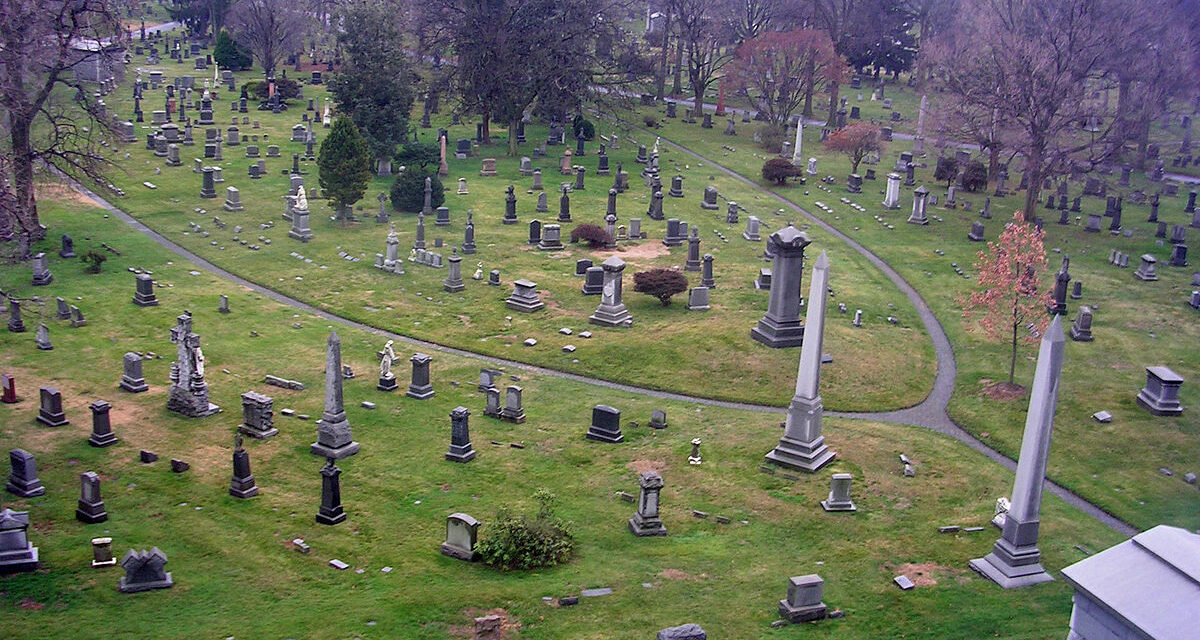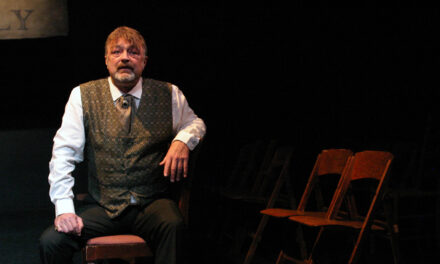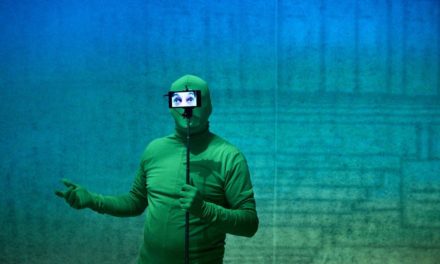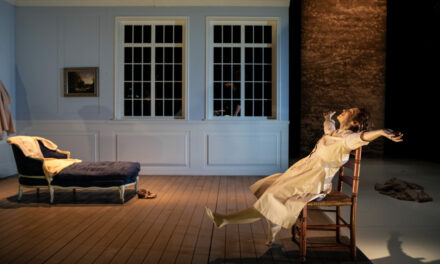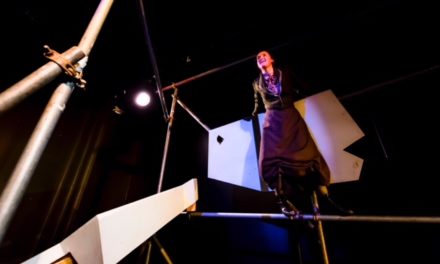I’ve never not gotten lost in Green-Wood Cemetery. One of the oldest landscaped cemeteries in these United States, Green-Wood was founded in 1838 when Brooklyn was still a mostly rural region. It sprawls over nearly 500 acres of now extremely desirable real estate; wanted dead or alive. It’s also one of the lushest and pleasant green spaces in New York City. Whereas our famous parks are given to overcrowding and under-shading, Green-Wood makes good on the suggestion of its name. Especially during quarantine, the cemetery has become a cherished refuge, a rare place as appropriate for contemplation as it is for taking a long walk in sweet-smelling air. In this way, it’s a return to origins. An innovation during the Industrial Revolution, rural cemeteries were designed to be beautiful, to be enjoyed. They were made for the living. But Green-Wood is huge and easy to get lost in, whether you’re looking for a particular grave (I’ll find you yet Leonard Bernstein!) or just trying to reach the exit before closing time.
When I went recently for Cairns, Gelsey Bell’s novel piece that is somewhere between a guided audio-tour and a work of experimental sound art, I honored this tradition. I spent about forty minutes riding my bike around the perimeter of the massive cemetery trying to find the entrance nearest the starting point. (Learn from my mistake: read the damn instructions on the website. It’s really not that complicated.) I got oriented, got into it, and fifteen minutes before the cemetery’s closing time, realized I had about twenty minutes left of the piece. Outside of nightmares, I’ve never moved faster to get out of the center of a graveyard. I came back a few days later to finish it, an accident that, in the end, exposed me to even more meaning and beauty inherent in the work.
Bell is a multi-hyphenate artist and performer, currently participating in the HERE Artist Residency Program (HARP). To experience Cairns, you first download an audio-track to your phone (do this at home to avoid data issues), enter Green-Wood at the Sunset Park entrance, 4th Avenue and 35th Street, pop on your headphones and press play. Then let Bell guide you. For one gorgeous hour, let her warm, inviting, disembodied voice becoming the Virgil to your Dante as you move through this space. On the way, you’ll become acquainted with its residents, some well-known, some who should be better known, some dead, some very much alive. Bell’s piece amplifies the noise of this quiet place, the buzzing, chirping, and nearly imperceptible sound of sap coursing through trees. Truly, the way she shines a spotlight on individual trees, one weeping beech in particular, forever changed the way I’ll think about cemeteries.
A cairn is a man-made pile of stones. Elemental and instinctive, cairns show up in human cultures throughout history, as trail markers, grave markers, and works of art. Bell’s Cairns was developed as part of #stillHERE:IRL, an initiative designed to cultivate safe, socially-distanced live art experiences. This sort of theatre en plein aire is a welcome balm after five months of intensive screen-time. That Cairns is site-specific, intimate, and contemplative makes it all the more perfect for the current disastrous moment. As Bell intimates near the beginning of the piece:
this place is a real sanctuary for me
I don’t really get creeped out by cemeteries
Even as a small child, I never did
I have always been drawn to them as safe places where I can be alone
not like a park or a museum or a restaurant
where most people are in groups
here it empties out
and there’s no reason to feel insecure about being quiet.
The piece is not a history of Green-Wood, don’t look to it for that. (The staff of Green-Wood does a fantastic job of documenting and making accessible the history of the site, and their evolving archives project deserves your attention.) Rather, it’s the thoughts and questions of one person who loves this place, and who will bring you into that love when you join her on this journey. I’ve never felt less lost in Green-Wood than when I walked it in Bell’s company. At every point she made sure I knew where to go and where to look, making me feel cared for and safe. A therapist friend of mine once told me about a patient who tenderly fixated on traffic signs: blind corner, a four-way stop, bump; he experienced a sense of gratitude at the thought that someone had put up these warnings to keep him safe. I felt the same way each time Bell cautioned me about a steep hill or broken tiles in the path. She also encourages you to pause the audio, listen to the organic music around you, explore on your own. Given how ambitious the work is, I appreciated this acknowledgment that it is not all-encompassing.
It must be noted, however, that Cairns is not accessible for anybody with impaired mobility. It’s not Bell’s fault that Green-Wood hides its treasures on crooked paths that snake around undulating hills. You can, of course, listen to the audio-track from anywhere, but that might be like eating food without tasting it: you get the texture and nutrition but none of the flavor.
As I mentioned, because of my own poor planning and geographic confusion, it took me two attempts to get through Cairns. At first, I was very much chagrined by this interruption. Imagine seeing the first two acts of a play, and then leaving and returning a few days later for act three. But those few days were no ordinary few days. Hurricane Isaias swept through New York, and its impact on Green-Wood was evident in the form of felled branches and whole trees. When I returned to the cemetery, all the main roads had been cleared of debris, but not the innumerable paths. How would the staff, more crucial members of this community, deal with the damage? In the course of one week, this massive, nearly two hundred years old-cemetery had experienced another monumental change. Some of its trees were killed, others injured and scarred. Bell’s piece will not work forever. The trees she describes may be removed, the jagged tiles could be replaced, or worse, become unusable. A cemetery is not permanent after all. Get there while you can.
This post was written by the author in their personal capacity.The opinions expressed in this article are the author’s own and do not reflect the view of The Theatre Times, their staff or collaborators.
This post was written by Abigail Weil.
The views expressed here belong to the author and do not necessarily reflect our views and opinions.

